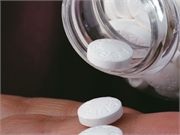Health Tip: Causes of Hoarseness
(HealthDay News) — Hoarseness describes abnormal voice changes, says Cleveland Clinic. Your voice may sound raspy or strained. Most causes of hoarseness are not serious and go away within two weeks. Cleveland Clinic mentions these potential causes of hoarseness: The common cold or an upper respiratory infection. Using your voiceContinue Reading







